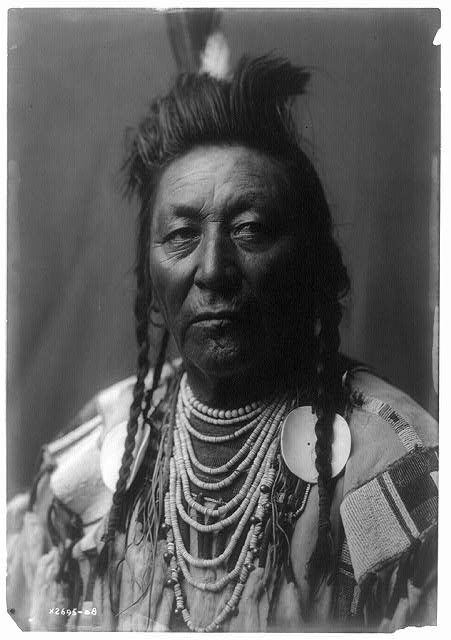
Library of Congress The Apsalookee (Crow) people arrived in Bighorn country in very early times and remained. They called this place home-the best place in the entire world. From their arrival in the early 1700's they were constantly challenged by strong tribes from every direction. From the north and west they fought Assiniboine, Blackfeet, and Flatheads. From the east, the Sioux and Cheyenne were constantly at war with them. Fortunately, the Crow have been blessed with great leaders. One of these leaders was Chief Plenty Coups who was born in 1848, a time of great change for the tribe. A Vision Of The Future In this vision he also witnessed a strong wind blowing all the trees down in a forest, except for one. He interpreted this to mean the white man would take over the land, just as the wind had swept away all the trees in the forest. The only one left would be the Crow, but only if they worked with them. Plenty Coups vision would help bridge the gap between two distinct cultures. Recognized for his bravery and leadership he was made a chief of the Apsalookee (Crow Tribe) by age 28. Allies With The U.S. Government By the middle of the 1880's the Crow Indians had moved to their reservation along the Yellowstone Valley of Montana. When Plenty Coups gave up his nomadic ways in 1884 he became one of the first Crow to work and settle on a farm, which was deeded to him through the Federal Indian Allotment Act. On his 320 acre tract, located a half mile east of Pryor, Montana he opened a general store, built a home, and began farming. The Most Important Battle In 1910, Montana Senator Thomas Walsh introduced a bill to open up the rest of Crow Reservation to white homesteaders. Plenty Coups , last of the traditional Crow chiefs, determined to fight Walsh’s efforts. He knew he needed educated young men with knowledge of the law to help. He called on Robert Yellowtail to assist in the battle. After seven long years, in 1917, Chief Plenty Coups, Yellowtail, and other tribal members stopped legislation that would open the Crow Indian reservation to general homesteading. The loss of reservation land had finally been stopped. Plenty Coups continued to defend the rights of his community and expressed no second thought about his lifelong conciliatory policy toward the whites, stating “When I think back, my heart sings because we acted as we did. “ Upon his death in 1932, at the age of 84, the Apsalookee (Crow) people voted to designate him as their last traditional tribal chief. |
Last updated: February 24, 2015
